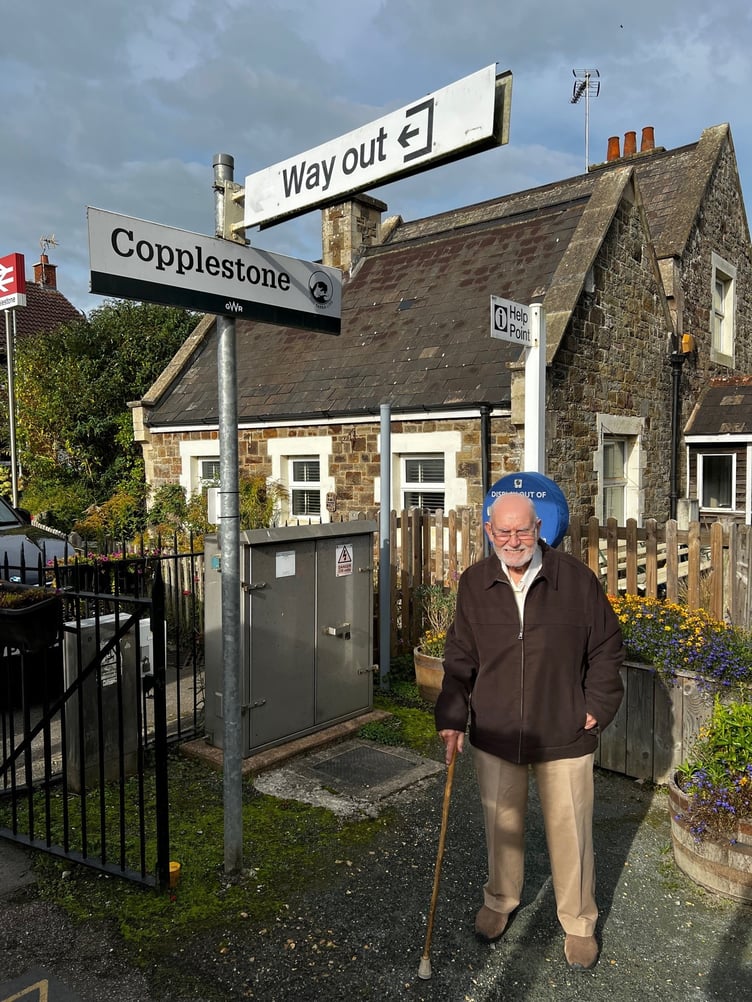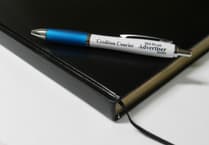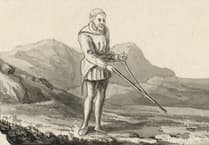IN September 1940 Alfred Kenneth Wilmshurst walked to school in the morning, on his own, as always.
Except this time, as well as his gas mask slung over his shoulder, he had a label with his name on it, tied to a buttonhole.
That day he would not be returning home after school, but instead, along with the rest of his classmates from his primary school in Tooting, he boarded a mainline train from London.
Many hours later, and in the dark, he arrived at Copplestone, near Crediton, where he was collected by Margaret Quick, the daughter of William and Edith Quick who lived at Loosebeare Manor, Zeal Monachorum.
The Quick’s were, and still are, a farming family, and Alfred found himself “billeted” in an environment very different, alien even, from the one he had just left.
His mother and three younger sisters had remained in London, whilst his father, an Able Seaman in the Royal Navy, had just served at Dunkirk on HMS Salamander.
Alfred had been evacuated from London as a young 10-year-old boy to escape the ravages of the German Luftwaffe as they “blitzed” the country’s capital and was one of more than 1.5 million people, mainly children, evacuated at the time to safer parts of the country, as part of Operation Pied Piper.
It was a mass evacuation that was to become the largest ever of its kind organised in this country.
Cities such as Glasgow, Bristol, Southampton, Birmingham, Coventry, Manchester and London all sent its young and vulnerable to such rural areas as Devon, Somerset and Wales.
Loosebeare Manor and Zeal Monachorum was that safe and peaceful haven for Alfred, and he loved his time spent with the Quick family, so much so that the wonderful memories from that time have never left him.
Alfred spent some months at Loosebeare, helping to milk the cows every morning before walking to school in Zeal Monachorum.
He remembers filling the water tanks every week using the hand pump outside the back door, picking apples in the orchard, working the cider press, swimming in a pool on the river Gissage, pumping the pipe organ for Zena Quick, the organist, at Sunday morning service in St Peter’s, and catching rats and moles on the farm.
They were happy, happy, carefree days.
Now aged 92, Alfred wanted to revisit the source of such peace and happiness for one last time, and on October 9, 2022 he did precisely that.
He returned to Loosebeare Manor. There he was warmly welcomed by Bill and Marian Quick.
Bill is Margaret’s nephew, and their welcome was as warm as it was for Alfred back in 1940.
Marian shared photos of the Quick family that Alfred would have known, and she talked about the changes that have occurred over the last 80 odd years. But it was all still very familiar to Alfred.
As was the station at Copplestone, although that is now a single track line and no longer out in the middle of nowhere, the approach being surrounded by housing now.
He revisited his primary school in Zeal Monachorum, now the village hall, and again held the pump handle to the pipe organ in the Church of St Peter the Apostle.
Yet the most poignant moment of his day was visiting the grave of Margaret Quick at St Michael and All Angels Church in Meeth, where she is buried beside her parents and three of her siblings.
Alfred laid flowers and left a tribute. Margaret had died in 1942 aged only 36 and her obituary noted that she was an active member of the Church Council in Zeal, a billeting officer under the evacuation scheme order, a voluntary ambulance driver, and a member of Bow and Zeal Nursing Association.
It further read that Margaret was ever ready to help in every good cause, was held in very high esteem, a keen horsewoman, and was loved by all.
That’s how Alfred remembers her.
In his tribute, he thanked Margaret for all her loving care, for the cherished memories, and for the instructive and happy times at Loosebeare Manor. “Your most grateful evacuee, Alfred”.
WHAT BECAME OF ALFRED?
Alfred, known as Little Alf as a child, and throughout his adult life as Ken, went on to have a successful 27-year career in the Royal Air Force as a navigator in Bomber Command.
Born in Sliema, Malta, to a Maltese mother and English father, Ken joined the RAF in 1951, as a 21 year-old, and was commissioned as an Acting Pilot Officer in Feb 1952.
He served on a number of Squadrons throughout his career, all based in the UK, and flew some 25 different aircraft during that time including B29’s (Washington’s), Canberra’s, Valiant’s and the iconic Vulcan bomber.
He flew at many air displays, including at the opening of the international airport at Auckland, New Zealand in January 1960.
At the end of his career, he spent seven years on VC10’s out of Brize Norton, flying Royalty and various Prime Ministers to all corners of the world and between 1968 and 1970 he served as the RAF Detachment Commander at Andersen Airforce Base on the island of Guam.
The American airbase served the Vietnam War at the time.
After the RAF he joined Ferranti, the defence electronics organisation, but finished his working life at the Cotswold Wildlife Park, Burford, where he became well-known on the ticket kiosk, driving the miniature train during the summer months and in December every year as Father Christmas in the Park Christmas Grotto.
Ken now lives on the edge of Oxford, with his wife of 70 years, Kathleen. He has two children, Chris and Michael, six grandchildren and four great grandchildren. He still loves to be outdoors.
Chris Wilmshurst





Comments
This article has no comments yet. Be the first to leave a comment.